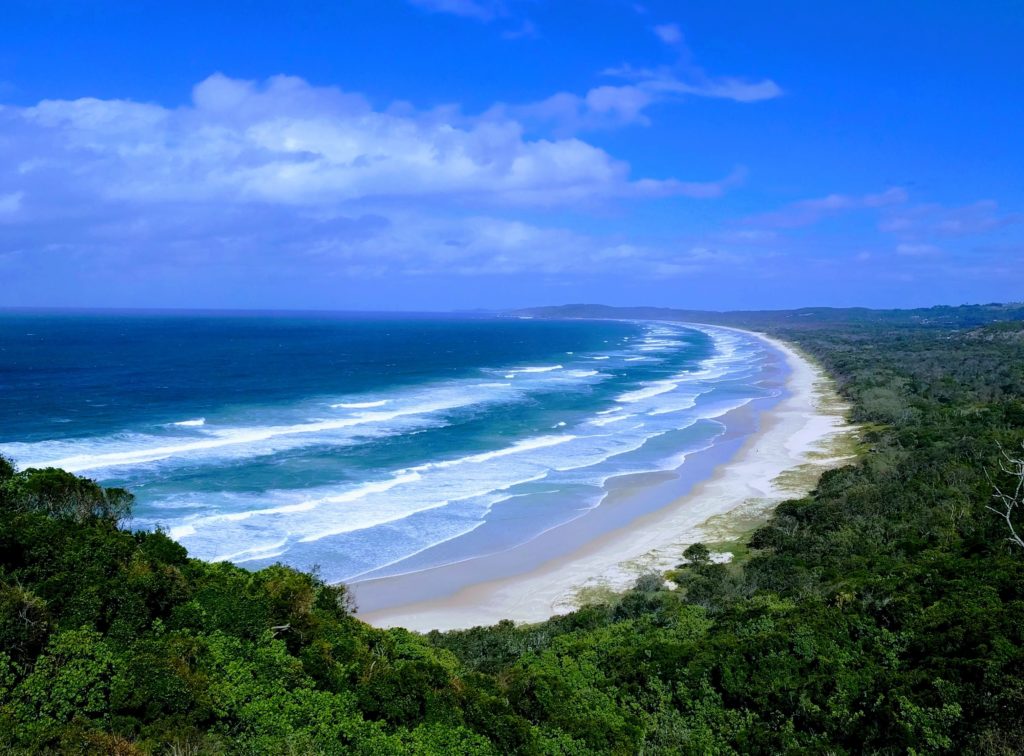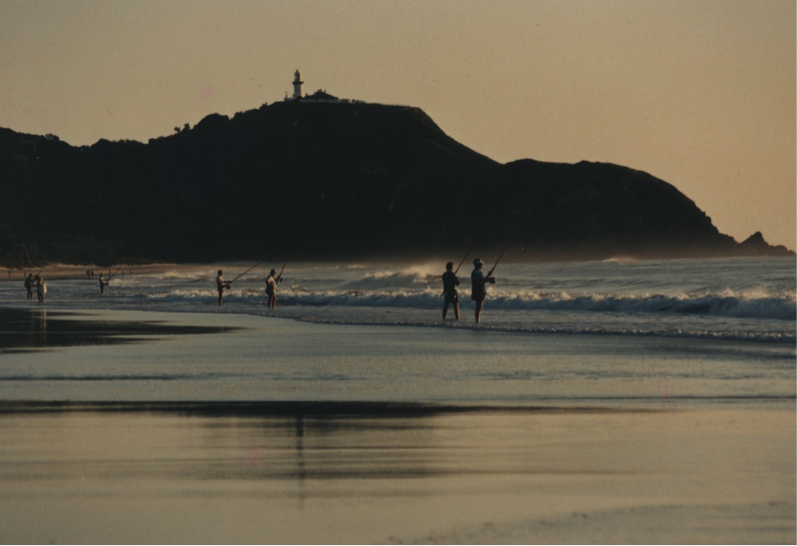Site 19: Tallow Beach
PREV NEXT
Do you know why this beautiful seven-kilometre long stretch of sand and surf is called Tallow Beach?
Up until 1864 it was un-named but in that year a large amount of tallow (rendered beef and mutton fat) highly valued at that time to make soap, candles and lubricants was washed up on the shores of the beaches either side of Cape Byron.
It represented the cargo of the 100-tonne schooner Volunteer that was sailing from Baffle Creek in Queensland to Sydney carrying 114 casks of tallow. The ship was caught in an easterly gale as it passed Cape Byron in the night and was driven on to the jagged rocks at the foot of Cape Byron and totally wrecked with the loss of all lives.
Some of the tallow was washed ashore still in the original casks and was later salvaged and “exported” from the beach. The contents of the broken casks floated and came ashore as small pieces and lumps where it melted in the hot sun, coated the sand grains and pebbles then solidified in the cool nights or when covered by sea water until it eventually decomposed. Hence the name Tallow Beach. Tallow is now used to make biodiesel.

Tallow Beach (Source Robert Sampimon)
Until tracks and roads were established inland in the 1880’s this beach served as part of the main coastal “highway” for horse-back travellers between the Richmond and Tweed Rivers. Timber was harvested from the dunes and flat land behind the beach and gold and mineral sands were mined from it.
Two intermittent water courses, Tallow Creek and Ti-tree Creek cross the beach draining tea brown water from lagoons behind the dunes. Ghost crabs build their sand-ball patterns and scurry around at night. Many birds feed and rest on it. A few build their nests on the edges of it. Occasionally large sea mammals are washed up to decompose and provide food for scavengers. Wallabies leave their characteristic tracks in the soft sand. The northern half of Tallow Beach is now included in the Arakwal National Park.
